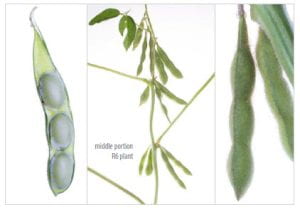Source: USDA
 Last week’s warm days and mostly fair weather supported crop progress but left some counties excessively dry, according to Ben Torrance, State Statistician, USDA NASS, Ohio Field Office. Topsoil moisture conditions were rated 9 percent very short, 19 percent short, 68 percent adequate, and 4 percent surplus. Statewide, the average temperature for the week ending on September 10 was 72.5 degrees, 4.6 degrees above normal. Weather stations recorded an average of 0.27 inches of precipitation, 0.27 inches below average. There were 5.6 days suitable for fieldwork during the week ending September 10.
Last week’s warm days and mostly fair weather supported crop progress but left some counties excessively dry, according to Ben Torrance, State Statistician, USDA NASS, Ohio Field Office. Topsoil moisture conditions were rated 9 percent very short, 19 percent short, 68 percent adequate, and 4 percent surplus. Statewide, the average temperature for the week ending on September 10 was 72.5 degrees, 4.6 degrees above normal. Weather stations recorded an average of 0.27 inches of precipitation, 0.27 inches below average. There were 5.6 days suitable for fieldwork during the week ending September 10.
 Ninety-five percent of corn was in or past dough, 53 percent was in or past dent, and 11 percent was mature. Corn for silage was 27 percent harvested. Eight percent of soybeans were dropping leaves. Corn and soybean condition were 82 and 75 percent good to excellent, respectively. Third cuttings of alfalfa hay and other dry hay were 88 and 58 percent complete, respectively. Fourth cuttings of alfalfa hay were 38 percent complete. Pasture and range condition was rated 68 percent good to excellent, down from the previous week.
Ninety-five percent of corn was in or past dough, 53 percent was in or past dent, and 11 percent was mature. Corn for silage was 27 percent harvested. Eight percent of soybeans were dropping leaves. Corn and soybean condition were 82 and 75 percent good to excellent, respectively. Third cuttings of alfalfa hay and other dry hay were 88 and 58 percent complete, respectively. Fourth cuttings of alfalfa hay were 38 percent complete. Pasture and range condition was rated 68 percent good to excellent, down from the previous week.


 Corn
Corn



 Scouting
Scouting





 Most of the corn that I have seen this week is in either the
Most of the corn that I have seen this week is in either the 
 Most of the corn that I have seen this week is in the
Most of the corn that I have seen this week is in the 

 Seventy-nine percent of corn was in or past dough, and 30 percent of Ohio corn was in or past dent. Ninety percent of soybeans were setting pods. Corn and soybean condition were 79 and 76 percent good to excellent, respectively. Second cuttings of other hay were 88 percent complete. Third cuttings of alfalfa hay and other dry hay were 69 and 44 percent complete, respectively. Pasture and range condition was rated 66 percent good to excellent, up from the previous week.
Seventy-nine percent of corn was in or past dough, and 30 percent of Ohio corn was in or past dent. Ninety percent of soybeans were setting pods. Corn and soybean condition were 79 and 76 percent good to excellent, respectively. Second cuttings of other hay were 88 percent complete. Third cuttings of alfalfa hay and other dry hay were 69 and 44 percent complete, respectively. Pasture and range condition was rated 66 percent good to excellent, up from the previous week.











 Disease pressure throughout the county continues to be very low. At this stage of growth, with little to no disease pressure, and new crop corn under $5 can we justify at least $25 per acre for a fungicide application?
Disease pressure throughout the county continues to be very low. At this stage of growth, with little to no disease pressure, and new crop corn under $5 can we justify at least $25 per acre for a fungicide application?

 It’s that time of year when weeds are beginning to show their ugly heads above the soybean canopy in many fields. During your scouting, if you find Palmer Amaranth or Waterhemp you should do whatever you can to prevent these devastating weeds from going to seed, including removing the entire plant from the field.
It’s that time of year when weeds are beginning to show their ugly heads above the soybean canopy in many fields. During your scouting, if you find Palmer Amaranth or Waterhemp you should do whatever you can to prevent these devastating weeds from going to seed, including removing the entire plant from the field.